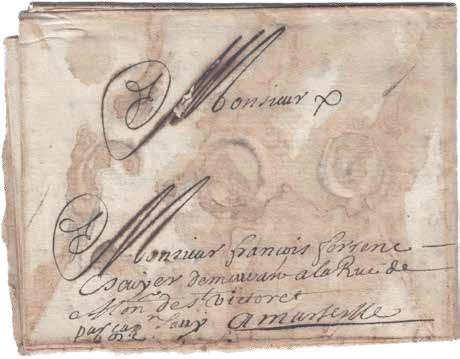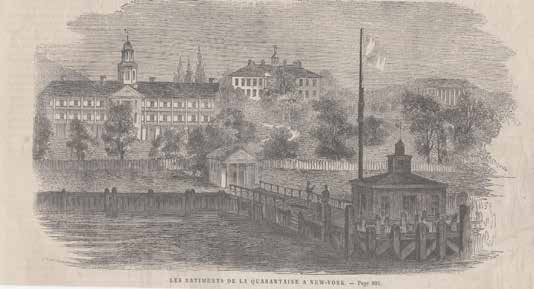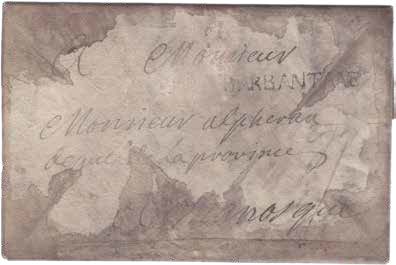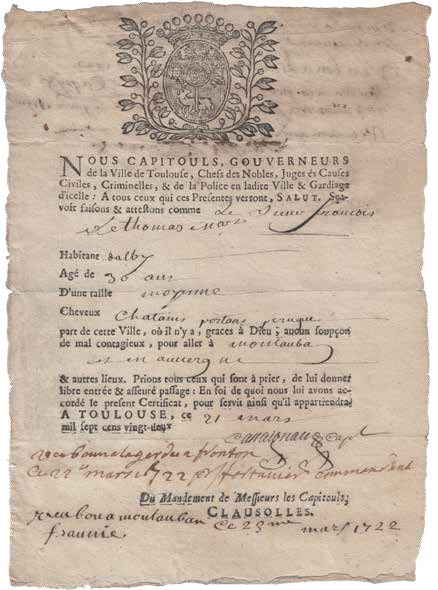
Guy Dutau, RDP, FRPSL
quarantines
from plague and cholera to coronavirus covid-19

January 2020: it is over a century since such an event last occurred. Almost 120 years after the so called ‘Spanish flu’ epidemic, French citizens dwelling in the Chinese province of Hubei, where an epidemic of respiratory infections caused by a new coronavirus, Covid-19 (now SARS-CoV-2), raged for several weeks, were brought back to France and assigned to a “quarantine period” of two weeks. The virus, apparently spotted for the first time in November/December 2019 in Wuhan market (which was subsequently closed from 1st January 2020), can be responsible for simple rhinitis, or even for clinically silent infections (like many coronaviruses), but also for severe pneumonia. The death rate from these pneumonias is estimated to be 2-3% of infected individuals, but is it still too early to provide precise figures. The WHO rapidly issued an international alert, and declared the pandemic state on 12th March 2020 due to the rapid spread of the virus worldwide – in China and other Asian countries (Korea, Iran) first, then in Europe where Italy, Spain and France are most severely hit, and lately in the Americas and Africa. As of 5th March 2020, the number of cases reported worldwide amounted to 154,471, and 5,871 deaths; by 21st March these figures had risen to respectively 255,000 reported infections and over 11,000 deaths.
The experience derived from over 30 years of research into the consequences of major historical epidemics (plague, cholera morbus, yellow fever) on communication between individuals – particularly through letters and other mailed items (Dutau, 2017) – offers food for thought on the reactions of human individuals or groups when faced with a catastrophic disease, and to consider possible parallels between ancient epidemics and the one we are currently living through.
2. Individual and group protection
In France, quarantines have been stopped since the beginning of the Twentieth Century, and several decennia before in Great Britain. They were justified by the need to isolate patients suspected of being affected by some ‘pestilent disease’, or showing the symptoms of one
of these, from the rest of the population. The fear of epidemics was actually extended to ship cargoes, as fabrics, furs and wool had previously been considered ‘susceptible items’, as well as paper.
This is why not only ships and their cargoes, but also the letters they carried, were disinfected (figures 1A & B, 2A & B). “Susceptible items” included any object “able to transmit plague” or other “pestilent diseases”. Over time, paper and books were also deemed “susceptible”, because paper was made from fabrics considered highly susceptible, such as wool, fur or thread. Consequently, letters as well as parcels and books were regarded as able to transmit those very serious diseases.
Today, armed with our scientific knowledge — which still proves insufficient to treat and to prevent new outbreaks— we should not look ironically at the practices used in former times. Indeed, so-called ‘modern times’ have demonstrated how easy it is to transmit very severe, and sometimes lethal, infections by simply putting spores of the anthrax agent Bacillus anthracis in envelopes and mailing them. This major case of bioterrorism surfaced a week after the attack against the World Trade Centre Twin Towers on 11th September 2001). On this occasion suspect letters, mainly sent to official organisations, were sterilised through irradiation in specialised centers in Lima (Ohio) and Bridgeport (New Jersey), as requested by the White House and the US Postmaster General. Mail was centralised in Washington DC, where measures were taken to remove the smell consistent with ‘letter disinfection’. This explains the late distribution of irradiated mail, which bore the supposedly reassuring stamps MAIL SANITIZED or IRRADIATED.
At the beginning of the 19th century, plague was no longer the only disease justifying quarantine and mail disinfection. Several yellow fever epidemics hit Spain between 1800 and 1821, first in Cadix (1800-1801 and 1803-1805), and later in several towns of Andalucia and Barcelona (1821) (Hoffmann, 1964).



These epidemics were due to the importation of infected mosquitoes by ships coming from Central America, particularly Cuba (Havana) and Colombia (Carthagena). The current spread of the tiger mosquito (Aedes albopictus) could similarly lead to dengue fever outbreaks in southern Europe.
The last quarantine at the Marseilles lazaretto, transferred in 1828 from Saint Martin d’Arenc to the new ‘Hospital Caroline’ built on the Frioul islands, was that of the Messageries Maritimes packet Sénégal, set for a cruise to Holy Land in 1902. This cruise was interrupted close to the Lipari Islands in Sicily, due to a case of plague affecting a crew member. The ship thus sailed back to Port Dieudonné, where passengers and crew members were submitted to a full quarantine (Bertot, 1902). Among those passengers were several persons of fame, such as Charles Diehl (corresponding member of the Institute of France), Professor Bucquoy (of the Academy of Medicine) and Raymond Poincaré, who was later President of the French Republic.
3. Isolation and lazarettos
The history of cholera and plague tells us that, whenever an epidemic outbreak occurred, the first reaction of inhabitants of the city concerned was to flee, either by sea or by land. During the Great Plague of Marseilles, which ravaged Provence and neighbouring regions of the South of France (1720-1722), most city inhabitants left the infected city to isolate themselves in countryside houses, even before the city blockade was enforced. Others also sailed to La Ciotat, and foremost Toulon. According to the information available to date, this was also the case during the current Covid-19 pandemic, in particular in Wuhan, where
a number of the city’s inhabitants took to the road before the total lockdown was activated. Similarly, many inhabitants migrated from the Paris area, where a major disease focus was detected early on, towards southern France.
This type of behaviour is not specific to a particular disease. As an example, a striking parallel can be made when reading the text of a letter sent from Paris on 26th April 1832 during the second cholera pandemic (1826-1841). It illustrates the (individual) fears linked to a severe epidemic, and the (collective) risks when willing to escape: “Every day, new and many victims of cholera can be numbered. Our neighbourhood was the first one hit; this is why we have seen from our windows manual burials, with carriages (…) In the midst of this evil, doctors maintain that it would be unsafe to get away (…) I had formed the project to leave Paris with my wife and children to spend some months in the south of France, but my wife was soon ill, then my son; we were thus forced to stay” (author’s own collection). This is how cholera spread from Paris (end of March 1832) to the rest of the Paris area, then to the rest of France and finally to southern Europe.
Jean-Noël Biraben wrote about plague: “Even more than that of the dead, the contact with infected persons is particularly feared” (Biraben, 1976, vol II, page 169). The most ancient means of isolating infected patients was to lock them in their own barricaded houses, and signal these houses with a cross. In Reggio Emilia, Bernabò Visconti expelled patients from the city, whereas in Avignon, in 1348, pope Clement VI bought a piece of land, surrounded by fortified walls, where wooden cabins were built to host and take care of patients. These wooden buildings, called depending on regions ‘cabins, ‘lodges’ or


‘barracks’, were burned down once the epidemic was over.
The authorities from major harbour cities (Leghorn, Ancona, Genoa, Naples, Venice, Trieste, Marseilles, etc) who traded mainly with the Near East, where plague was endemic, were well aware of the sanitary risks and built hospitals for plague patients which became lazarettos (isolation hospitals) (Panzac, 1986). Many discussions were held as to the advantages and drawbacks of their location, within the city or away from it, and if at all possible on a nearby island. Indeed, it is often on islands (or remote peninsulas) that lazarettos were built, for example the lazarettos of Venice (Lazzaretto Santa Maria di Nazareth, on Poveglia island), Marseilles (Hospital Caroline, on Ratonneau island), Bordeaux (lazaretto Marie-Thérèse, Trompeloup) and Lorient (Saint-Michel island). An epidemiology professor, Léon Colin, insisted on the importance of building the lazarettos away from main cities, so as to “lower the pressure of commercial interests” (Colin, 1875).
During the current Covid-19 pandemic, the God Mountain hospital was built within 10 days , in early February 2020, in Wuhan, China – the place where the epidemic started. As of 15th March, a ‘pre-built’ hospital able to host 500 patients was installed about 60 km from Moscow. In Mulhouse, on 20th March 2020, a temporary military hospital with 30 resuscitation beds, served by military and paramilitary staff, was erected by the French Army. The US Federal Government decided to send the medical ship USNS Comfort to New York harbour, which has 1,000 rooms, surgical blocks and resuscitation equipment). Again, the history of ancient epidemics shows that such provisional and floating lazarettos are nothing new. Among notable examples are i) L’Anne-Marie, sailing back from Havana and converted into a floating lazaretto together with two other frigates from Lorient, L’Alcibiade and La Pénélope, during the yellow fever epidemic of Saint-Nazaire (summer 1861) ; ii) the provisional lazaretto Château-Yquem (captain Ambroise-Jean Lejard), established in September 1885, during the fifth cholera pandemic, at some distance of the embankment of the (now Vietnamese) island of Poulo-Condor (Dutau, 2017). Such lazarettos could be established under the terms of the International Sanitary Convention
dated 27th May 1853, which allowed ship captains to enforce exceptional measures in case of sanitary emergency.
The system of isolation through lazarettos and quarantine was officially abandoned during the second half of the 19th century. However, as we wrote in 2017 in a postal history book about mail disinfection, the quarantine system “is still very present today in the collective memory”, and that the appearance or resurgence of some infectious epidemic diseases could “awaken passionate reactions and fears”. Now, early in 2020, these predictions come true. In the case of Covid-19, the resurgence of a known disease is not involved, but, much worse, the appearance of a new virus, and hence a new infectious disease, driving fear and leading to inadequate individual or collective behaviours. Current medicine seems at first helpless, but probably only temporarily, as, in a very short period of time, the identification of the virus, and shared knowledge of its nucleic acid sequences, have enabled international testing of known antiviral treatments and the start of vaccine preparation. Nowadays, fighting infectious peril is no longer the business of one city or one region, as it was at the time of the plague epidemics or cholera pandemics. Quarantine isolation methods have been reactivated, and it seemed logical that when the French inhabitants of Wuhan province were brought back to their homeland, they were at first isolated as a precautionary measure in a holiday centre away from major cities, and strictly guarded, in Carry-le Rouet – only a few nautical miles from the ancient quarantine hospitals of Marseilles . “History always repeats itself twice”, to quote the title of an essay by Dimitri Casali and Olivier Gracia (2017). Or is it often more than twice
The persons admitted in those strict isolation conditions, quite different from those that our
ancestors ‘from lazarettos times’ had to face, were strictly held in custody during a ‘quarantine of 14 days’, the time needed to make sure they were free from any Covid-19 infection. Such a ‘preventive isolation’ is again nothing new. First prescribed by Bernabo Visconti in Reggio Emilia, then in ancient Ragusa (now Dubrovnik), newcomers had to spend a month on Mercano island before being allowed to enter the harbour (Maffart & Perret, 1998). After this Venice, Marseilles, the main Italian harbours, Barcelona and other cities imposed an isolation of 40 days (hence the


“Quarantina” denomination), following
‘Hippocrates recommendations’. Later on, the quarantine duration was modulated according to the incubation period of the disease and the duration of the journey in. Regarding the Covid-19 pandemic, the French media thought it correct to use the neologism “quatorzaine” to designate a 14 day quarantine. In law, this term refers to “a period of 14 days to be observed legally between each step of a judiciary seizing procedure”.
During the current pandemic, many governments have enforced ‘containment’ measures, with diverse durations and modalities according to epidemic progress. The choice between partial and total containment is a matter for much discussion which, when one considers the very fast contagion progress, can lose precious time and ground to the virus. Complying with measures restrictive to individuals but absolutely needed collectively is sometimes poorly understood, and often poorly executed, which legitimates strict control procedures, such as the use of downloadable ‘derogatory displacement authorisation’ and police controls – before possibly even more severe decisions. These measures mirror those used during ancient great epidemics: I) ‘derogatory displacement authorisations’ are the new ‘bill of health’; II) non observance of the displacement restrictions leads to fines, the value of which have rapidly increased, and soon to more coercive sanctions (jail); in the time of plague and cholera, infringements of circulation bans were punished by fines, prison, forced labor, desptach to penal colonies, or even death in the worst cases.
4. Transmission modes and risks
The French ministry for Health issued a list of Frequently Asked Questions, to be “regularly updated according to available knowledge”.
It is now established that: i) Covid-19 is a new virus ; ii) the most likely hypothesis is that of an initial transmission from animals to humans, without any more precise detail at the moment; iii) transmission between humans is certainly by respiratory inhalation (Pflügge droplets); iv) the virus killed by heat, hence possible transmission risk via raw or poorly cooked meat and/or fish.
After a period of uncertainty and even downscaling (the severity of Covid-19 infection is in no way comparable to that of seasonal flu), it is now obvious that this new virus is highly contagious. Its incubation duration does not seem to exceed 14 days, which corresponds to the quarantine duration enforced by the French sanitary authorities for the French citizens isolated in Carry-le-Rouet.
The Ministry documents specify that “coronavirus Covid-19 persists up to three hours on dry inert surfaces, and up to six days in wet conditions”. Therefore, “to clean and disinfect housing occupied by persons affected by Covid-19, it is recommended to use classic cleaning and disinfection products: detergents on wet surfaces (notably sinks, showers, bathtubs and waterclosets), followed by disinfection with diluted bleach solutions as prescribed by the manufacturer”. It is best to use “single-use gloves, which should then be
disposed of”. For the Health Ministry officials, “given the time and transportation conditions from China, the infection risk by Covid-19 after touching objects imported from China is considered extremely low”.
At the time of plague the disinfection of people and places, most often carried out by ‘Disinfectors’ appointed by the city officers, was based on the use of several “perfumes” assumed to eliminate responsible “miasmas”: a “healthy odour” was associated with successful disinfection (Roucaud, 1919). The medical doctors from the Health Office in Marseilles wore beak shaped masks and protective coats, images of which are well known. While Asian populations are culturally used to wearing masks, as a sign of individual and collective protection, this is not the case in Europe – possibly because they are not widely available. In many countries, like France, masks are rightfully dedicated to nursing staff (doctors, nurses, etc) only, although not all of them have such masks handy … And, oddly, we now see televised images, mainly from China, of big tank trucks – the modern ‘disinfectors’ – spraying disinfecting liquids in the streets. Disinfection through liquid projection and vaporisation surfaces again. But do we currently know all transmission pathways of the Covid-19 virus? A recent paper published in the New England Journal of Medicine shows that the virus can persist up to four hours on a copper surface, up to 24 hours on cardboard, and up to two to three days on plastic and steel. It can stay up to three hours in aerosols. Therefore, the transmission through aerosols is of major concern for the nursing staff in direct contact with infected patients. This laboratory data does not mean that ‘persistence’ equates to ‘contamination’, but the precaution principle can reasonably be applied to the general population (van Doremalen et al, 2020).
5. Current or foreseeable consequences
The texts of the letters we know, written during the 18th and 19th centuries and coming from traders from Marseilles (with the Near East) or Bordeaux (with the West Indies) illustrate the severe losses caused by plague or yellow fever epidemics (Dutau, 2017).
With Covid-19, history stutters again: the new viruses came from Asia or the Middle East, and global trade is sharply hit. Economists and political scientists are unanimous in stating that this epidemic will have very strong consequences on tourism and trade. They estimate that Covid-19 could decrease China’s Gross Domestic Product by 2%, and the global GDP by over 1,000 billions of US$ or even much more! In a globalised economy, losses will certainly be multilateral, as a consequence of trade reduction by air and by sea. One immediate consequence is the crash of Chinese tourist travel to Europe and the rest of the world, and then of global tourist travel, so that activity losses are snowballing in many countries. However, history shows that after such a catastrophic collapse caused by an epidemic or a war, life rather rapidly gets back
to normal, so that these losses might only be temporary. This rebound phenomenon was seen on multiple occasions, including in the years that followed the Great Plague of Marseilles or the so-called Spanish flu

epidemics, the latter of which killed 30 to 50 million people (that is, 3 to 5 times more than WW1 itself).
Held by the famous ‘precaution principle’, populations now worry, for good or bad reasons, about the safety of Chinese products and goods, and wonder for instance whether it is safe to “eat Chinese” or to use drugs manufactured in China. They also ask themselves can we kill this virus? The French Higher Health Authority provided answers to all these questions, including a ‘yes’ regarding the use of imported drugs (which might be needed in the longer run); however, some of these answers might change as knowledge progresses …
One pending question relates to the handling of mail from China to France, which normally takes from six to ten days. The time needed for parcels is longer and more varied, ranging from a few days to several days. To date, we have
ignored the question of how mail from China to France should be treated – or if by any specific means. Only the future will tell …
6. Conclusion
The Covid-19 epidemic has awoken passions and fears, and the memory of great epidemics of a distant (plague, cholera, the Spanish Flu of 1918) and more recent past (SARS and MERS-CoV) show that the concepts of preventive isolation and quarantine are still very much alive – and working. Recalling historical facts, and putting them in parallel to the current epidemic, can be useful to understand some individual and group reactions, and to
shed light on the actions of public political and sanitary authorities. The big question is: will we be wise enough to draw all useful teachings, sanitary or not, from this pandemic?
Guy Dutau is the author of Mail Disinfection in France and occupied territories: History, regulations, lazarettos, methods. For further information, or to contact the author, please email him at [email protected], or via [email protected].
